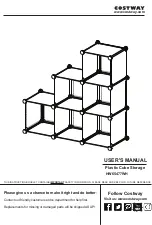
applications or operating system utilities to use the standard SCSI device nodes to access iSCSI
devices can result in sending SCSI commands to the wrong target or logical unit.
To provide consistent naming, the iSCSI driver scans the system to determine the mapping from
SCSI device nodes to iSCSI targets. The iSCSI driver creates a tree of directories and symbolic
links under
/dev/iscsi
to make it easier to use a particular iSCSI target's logical unit.
The directory tree under
/dev/iscsi
contains subdirectories for each iSCSI bus number, each
target id number on the bus, and each logical unit number for each target. For example, the whole
disk device for
bus 0
,
target ID 0
, and
LUN 0
would be
/dev/iscsi/bus0/target0/LUN0/disk
.
In each logical unit directory there is a symbolic link for each SCSI device node that can be
connected to that particular logical unit. These symbolic links are modeled after the Linux
devfs
naming convention:
•
The symbolic link
disk
maps to the whole-disk SCSI device node such as
/dev/sda
or
/dev/sdb
.
•
The symbolic links
part1
through
part15
maps to each partition of that SCSI disk. For
example, a symbolic link can map to partitions
/dev/sda1
,
dev/sda15
, or to as many
partitions as necessary.
NOTE:
These symbolic links exist regardless of the number of disk partitions. Opening the
partition devices results in an error if the partition does not actually exist on the disk.
•
The symbolic link
mt
maps to the auto-rewind SCSI tape device node for the LUN
/dev/st0
,
for example. Additional links for
mtl
,
mtm
, and
mta
map to the other auto-rewind devices
/dev/st0l, /dev/st0m, /dev/st0a
, regardless of whether these device nodes actually
exist or could be opened.
•
The symbolic link
mtn
maps to the no-rewind SCSI tape device node, if any. For example,
this LUN maps to
/dev/nst0
. Additional links
formtln
,
mtmn
, and
mtan
map to the other
no-rewind devices such as
/dev/nst0l, /dev/nst0m, /dev/nst0a
, regardless of
whether those device nodes actually exist or could be opened.
•
The symbolic link
cd
maps to the SCSI CD-ROM device node, if any, for the LUN
/dev/scd0
for example.
•
The symbolic link
generic
maps to the SCSI generic device node, if any, for the LUN
/dev/sg0
.
Because the symlink creation process must open all of the SCSI device nodes in
/dev
in order to
determine which nodes map to iSCSI devices, you may see many
modprobe
messages logged
to
syslog
indicating that
modprobe
could not find a driver for a particular combination of major
and minor numbers. This message can be ignored. The messages occur when Linux is unable to
find a driver to associate with a SCSI device node that the iSCSI daemon is opening as part of its
symlink
creation process. To prevent these messages from occurring, remove the SCSI device
nodes that do not contain an associated high-level SCSI driver.
Target bindings
The iSCSI driver automatically maintains a bindings file,
/var/iscsi/bindings
. This file
contains persistent bindings to ensure that the same iSCSI bus and target ID number are used for
every iSCSI session with a particular iSCSI
TargetName
, even when the driver is repeatedly
restarted.
This feature ensures that the SCSI number in the device
symlinks
(described in
“Assigning device
names” (page 100)
) always map to the same iSCSI target.
Set up the iSCSI Initiator
101
Summary of Contents for EVA P6000
Page 187: ...German laser notice Italian laser notice Japanese laser notice Laser compliance notices 187 ...
Page 193: ...German battery notice Italian battery notice Battery replacement notices 193 ...
Page 194: ...Japanese battery notice Spanish battery notice 194 Regulatory compliance notices ...
















































